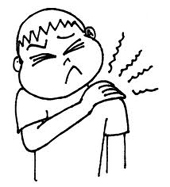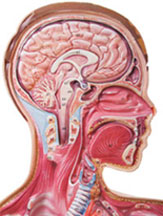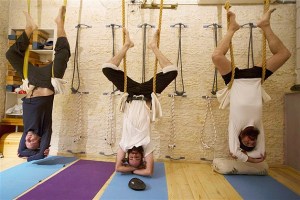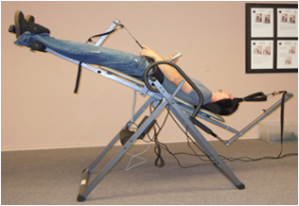By J.C. Smith, MA, DC
There’s an 80 percent chance you’ll suffer back pain during your lifetime, for which your medical doctor will likely recommend over-the-counter pain medication or prescription medication to relieve the pain temporarily.
Depending on your doctor’s assessment and how you respond, they may even consider you a candidate for spine surgery at some point, an increasingly likely (and dangerous) option.
Then there’s chiropractic, which research and experience show is the safest, most effective option for most cases of back pain. Unfortunately, too many people end up in a medical doctor’s office instead of a chiropractor’s office, which accounts for the rampant use of medications and surgery for back pain, particularly here in the U.S. Here’s why back surgery – and medical management of back pain in general – is too frequent, too costly and too ineffective, and why chiropractic care should be your first option when dealing with back pain.
Too Many, Too Costly
Research suggests that of the 500,000-plus disk surgeries that are performed annually (a significant increase of late), as many as 90 percent are unnecessary and ineffective. Richard Deyo, MD, a professor at Oregon Health and Science University, notes, “It seems implausible that the number of patients with the most complex spinal pathology [has] increased 15-fold in just six years” and mentions one strong motivation includes “financial incentives involving both surgeons and hospitals.”
 A study conducted by Deyo and Cherkin in 1994compared international rates of back surgeries and discovered that the rate of American surgery is unusually excessive and directly attributed to the supply of spine surgeons: “The rate of back surgery in the United States was at least 40 percent higher than any other country and was more than five times those in England and Scotland. Back surgery rates increased almost linearly with the per-capita supply of orthopedic and neurosurgeons.”
A study conducted by Deyo and Cherkin in 1994compared international rates of back surgeries and discovered that the rate of American surgery is unusually excessive and directly attributed to the supply of spine surgeons: “The rate of back surgery in the United States was at least 40 percent higher than any other country and was more than five times those in England and Scotland. Back surgery rates increased almost linearly with the per-capita supply of orthopedic and neurosurgeons.”
On the Top 10 list of diseases in America, “back pain” stands at number eight, which according to Forbes.com costs over $40 billion annually for treatment costs alone. Other estimates that include disability, work loss and total indirect costs range between $100 and $200 billion per year. Back pain sent over 3 million people to emergency rooms in 2008 at a cost of $9.5 billion, making it the ninth most expensive condition treated in U.S. hospitals.
What accounts for these staggering costs? We know one thing: Doctors and hospitals are making huge profits off the backs (no pun intended) of unsuspecting patients who are not told there may be better and cheaper ways to solve their back pain with chiropractic care or other non-invasive methods. Back surgeries are among the most expensive, and these costs do not include hospitalization, imaging, drugs or medications. Just take a look at these per-surgery costs for various types of back surgeries:
- Anterior cervical fusion: $44,000
- Cervical fusion: $19,850
- Decompression surgery: $24,000
- Lumbar laminectomy: $18,000
- Lumbar spinal fusion: $34,500
Dr. Deyo found the mean hospital costs alone for surgical decompression and complex fusions ranged from $23,724 for the former to $80,888 for the latter. When combined with surgical costs, medications, magnetic resonance imaging (MRI), rehabilitation and disability, the average spine surgery case approaches $100,000 or more. The direct costs are astronomical and may reach as high as $169,000 for a lumbar fusion and $112,000 for a cervical fusion.
Fortune 500 companies spend over $500 million a year on avoidable back surgeries for their workers and lose as much as $1.5 billion in indirect costs associated with these procedures in the form of missed work and lost productivity, according to a two-year study by Consumer’s Medical Resource (CMR). The study, “Back Surgery: A Costly Fortune 500 Burden,” found that one out of three workers recommended for back surgery said they avoided an unnecessary procedure after being given independent, high-quality medical research on their diagnosed condition and treatment options. In addition, patients who refused surgery and opted for alternative and less invasive procedures to treat their back pain reported experiencing healthier and more personally satisfying outcomes.
Too Ineffective
Back surgery “has been accused of leaving more tragic human wreckage in its wake than any other operation in history,” according to Gordon Waddell, MD, director of an orthopedic surgical clinic for over 20 years in Glasgow, Scotland.
“Low back pain has been a 20th century health care disaster,” said Waddell. “Medical care certainly has not solved the everyday symptom of low back pain and even may be reinforcing and exacerbating the problem.”
In 2010, researchers reviewed records from 1,450 patients in the Ohio Bureau of Workers’ Compensation database who had diagnoses of disc degeneration, disc herniation or radiculopathy, a nerve condition that causes tingling and weakness of the limbs. Half of the patients had surgery to fuse two or more vertebrae in the hopes of resolving their low back pain. The other half had no surgery, even though they had comparable diagnoses.
After two years, only 26 percent of those who had surgery had returned to work, compared to 67 percent of patients who did not have surgery. Of the lumbar fusion subjects, 36 percent had complications and 27 percent required another operation. Permanent disability rates were 11 percent for patients undergoing surgery, compared to only 2 percent for patients who did not undergo surgery. In what might be the most troubling finding, researchers determined there was a 41 percent increase in the use of painkillers, with 76 percent of surgery patients continuing opioid use after surgery. Seventeen surgical patients died by the end of the study.
 The study provides clear evidence that for many patients, fusion surgeries designed to alleviate pain from degenerating discs do not work, according to the study’s lead author, Dr. Trang Nguyen, a researcher at the University of Cincinnati College of Medicine. His study concluded: “Lumbar fusion for the diagnoses of disc degeneration, disc herniation, and/or radiculopathy in a workers’ compensation setting is associated with a significant increase in disability, opiate use, prolonged work loss, and poor return-to-work status.”
The study provides clear evidence that for many patients, fusion surgeries designed to alleviate pain from degenerating discs do not work, according to the study’s lead author, Dr. Trang Nguyen, a researcher at the University of Cincinnati College of Medicine. His study concluded: “Lumbar fusion for the diagnoses of disc degeneration, disc herniation, and/or radiculopathy in a workers’ compensation setting is associated with a significant increase in disability, opiate use, prolonged work loss, and poor return-to-work status.”
Commenting on the procedure in general, Dr. Nguyen said, “The outcomes of this procedure for degenerative disc disease and disc herniation make it an unfortunate treatment choice.”
In 1994, the conducted the most thorough investigation into acute low back pain in adults and came to the following conclusion in its Patient Guide: “Even having a lot of back pain does not by itself mean you need surgery. Surgery has been found to be helpful in only 1 in 100 cases of low back pain problems. In some people, surgery can even cause more problems. This is especially true if your only symptom is back pain.”
In his 2009 article, “Overtreating Chronic Back Pain: Time to Back Off?” Dr. Deyo speaks of the shortcomings of medical spine treatments in the U.S.: “Jumps in imaging, opioid prescriptions, injections, and fusion surgery might be justified if there were substantial improvements in patient outcomes. Even in successful trials of these treatments, though, most patients continue to experience some pain and dysfunction. Prescribing yet more imaging, opioids, injections, and operations is not likely to improve outcomes for patients with chronic back pain. We must rethink chronic back pain at fundamental levels.”
Dr. Deyo is not alone in his call for reform in spine care. The editors of The Back Letter, a newsletter from the Department of Orthopedic Surgery at Georgetown Medical Center in Washington, D.C., agreed with his frustration:
“The world of spinal medicine, unfortunately, is producing patients with failed back surgery syndrome at an alarming rate … There is growing frustration over the lack of progress in the surgical treatment of degenerative disc disease. Despite a steady stream of technological innovations over the past 15 years – from pedical screws to fusion cages to artificial discs – there is little evidence that patient outcomes have improved … Many would like to see an entirely new research effort in this area, to see whether degenerative disc disease and/or discogenic pain are actually diagnosable and treatable conditions.”
Chiropractic: The First Option for Back Pain
According to Pran Manga, PhD, a health economist, “There is an overwhelming body of evidence indicating that chiropractic management of low back pain is more cost-effective than medical management.” He is not alone in his assessment. Numerous international and American studies have shown that for nonspecific back pain, manipulation is heads above all other treatments. In fact, Anthony Rosner, PhD, testifying before the Institute of Medicine, stated: “Today, we can argue that chiropractic care, at least for back pain, appears to have vaulted from last to first place as a treatment option.”
Chiropractic care not only has catapulted to the top of the list for back pain care; chiropractic patients are also extremely positive about their treatments. TRICARE, the health program for military personnel and retirees, evaluated patients’ response to chiropractic care.
The enormously high patient satisfaction rates astounded the TRICARE administrators, with scores that ranged from 94.3 percent in the Army. The Air Force tally was also high, with 12 of 19 bases scoring 100 percent; and the Navy also reported ratings in the 90 percent or higher. Even the TRICARE outpatient satisfaction surveys (TROSS) rated chiropractors at 88.54, which was 10 percent “higher than the overall satisfaction with all [health care] providers.”
T.W. Meade, MD, of the Wolfson Institute of Preventive Medicine in London, surveyed patients three years after treatment and found that “significantly more of those patients who were treated by chiropractic expressed satisfaction with their outcome at three years than those treated in hospitals – 84.7 percent vs. 65.5 percent.”
The Treatment of Choice
The truth is now emerging. There is broad agreement internationally that surgery should not generally be considered until there has been a trial of conservative nonsurgical care. Here are a few of the many examples supporting chiropractic’s use as the first-line treatment for back pain:
Dr. Manga conducted two studies in the 1990s and noted, “There should be a shift in policy now to encourage the utilization of chiropractic services for the management of low back pain, given the impressive body of evidence on the effectiveness and comparative cost-effectiveness of these services, and on the high levels of patient satisfaction.”
An editorial in the Annals of Internal Medicine published jointly by the American College of Physicians and the American Society of Internal Medicine in 1998 noted that “spinal manipulation is the treatment of choice”: “The Agency for Health Care Policy and Research (AHCPR) recently made history when it concluded that spinal manipulative therapy is the most effective and cost-effective treatment for acute low back pain … Perhaps most significantly, the guidelines state that unlike nonsurgical interventions, spinal manipulation offers both pain relief and functional improvement. One might conclude that for acute low back pain not caused by fracture, tumor, infection, or the cauda equina syndrome, spinal manipulation is the treatment of choice.”
William Lauerman, MD, chief of spine surgery and professor of orthopedic surgery at Georgetown University Hospital, stated: “I’m an orthopedic spine surgeon, so I treat all sorts of back problems, and I’m a big believer in chiropractic.”
Dr. Deyo has mentioned chiropractic as a solution: “Chiropractic is the most common choice, and evidence accumulates that spinal manipulation may indeed be an effective short-term pain remedy for patients with recent back problems.”
Dr. Waddell also suggests chiropractic care as a solution: “There is now considerable evidence that manipulation can be an effective method of providing symptomatic relief for some patients with acute low back pain.”
And Jo Jordan, PhD, has written that spinal manipulation may be the “lone ray of light” for back pain treatment.
Be Safe, Not Sorry
In 2006, doctors performed at least 60 million surgical procedures of all types; one for every five Americans. No other country does nearly as many operations. Not only are surgeries rampant, but many are being shown to be ineffective and dangerous.
According to Barbara Starfield, MD, MPH, of the Johns Hopkins School of Hygiene and Public Health, medical care is now the third-leading cause of death in the U.S., causing 225,000 preventable deaths every year as tools to make them safer go unused.
So, what’s the take-home message? Most people experience back pain, and much more often than not, it’s caused by something that doesn’t require extreme intervention, like a tumor, fracture, infection, etc. When back pain strikes, chiropractic is a great first choice, but too many people end up taking medication – or even worse, they end up in a vicious cycle of medical care that eventually can lead to the operating room – for back pain that could have been managed conservatively in the overwhelming majority of cases. That’s something to think about the next time your back hurts.
Article from: http://www.toyourhealth.com/mpacms/tyh/article.php?id=1447

 The technique uses a specific and unique sequence of manipulations and pressure points to the shoulder joints and soft-tissues. In essence, these can be thought of as ‘inputs’ into the nervous system.
The technique uses a specific and unique sequence of manipulations and pressure points to the shoulder joints and soft-tissues. In essence, these can be thought of as ‘inputs’ into the nervous system. Nothing in the body happens without a good reason. The body is a beautifully complex system and when it goes wrong it is often because it is trying to protect us.
Nothing in the body happens without a good reason. The body is a beautifully complex system and when it goes wrong it is often because it is trying to protect us. A frozen shoulder seems to result from the way the brain responds to inflammation around the long head of the biceps, in the rotator interval (see anatomy). In some people, and we still don’t know why, the brain over-reacts to this inflammation by switching off groups of muscles and changing their dynamics.
A frozen shoulder seems to result from the way the brain responds to inflammation around the long head of the biceps, in the rotator interval (see anatomy). In some people, and we still don’t know why, the brain over-reacts to this inflammation by switching off groups of muscles and changing their dynamics.




